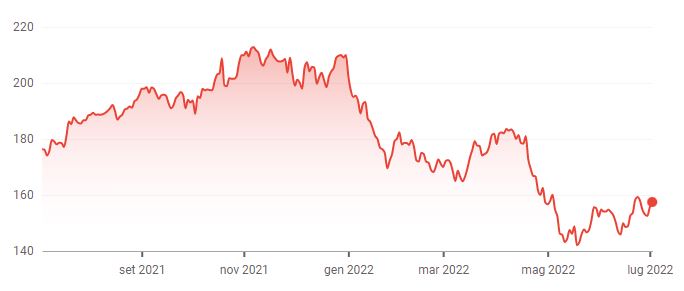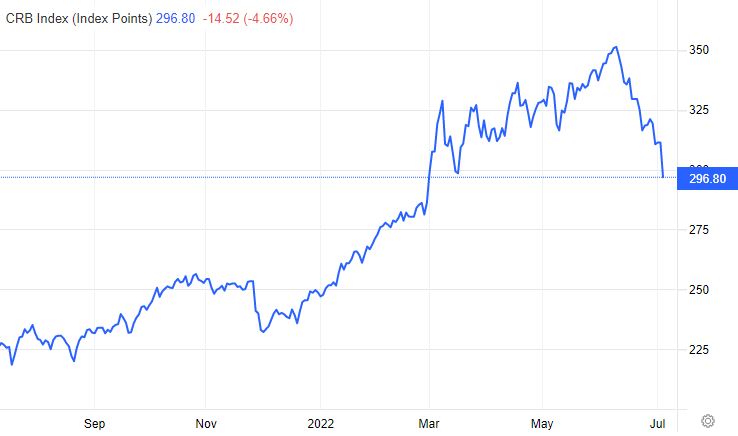It must be said, however, that market reality has, as always, several facets. While it is true, in fact, that the average performance of stock markets has been negative in all the major industrialized countries, not all asset classes have behaved in the same way. There are some, in fact, that have had double-digit positive performances, even giving some satisfaction to investors.
To realize this, one only has to look, for example, at representative indices of commodity prices, such as the CRB Commodity Index, which, in the past 6 months, in the wake of soaring prices, has gained a total of about 26 percent while in one year it has risen as much as 36 percent.
The music does not change when looking at the average returns of funds in various categories surveyed by Morningstar, a company that specializes in analyzing asset management products. Since the beginning of the year, equity funds investing in the energy sector have gained almost 22 percent on average. By contrast, the worst performing category has been equity funds specializing in technology stocks, which, again since the beginning of 2022, now have an average negative performance of 27 percent behind them after putting up stellar gains during previous years.
"The only sectors in Europe that managed to put up a positive performance were energy (6.4 percent) and telecommunications (2.1 percent)," recalls Generoso Perrotta, head of Advisory at Banca Generali, "The former benefited from the upward trend in oil prices while the latter from the stability of cash flows and the speculative appeal related to Deutsche Telekom's sale of the tower business."
On the opposite front, Perrotta recalls that sectors most exposed to domestic demand, such as retail, suffered the most in the first part of the year with a drop of more than 30 percent. Defensive sectors such as pharmaceuticals and utilities also ended the first half down, by 12.3 percent and 16.1 percent, respectively.
"The decline in the first six months had the consequence of bringing European market prices in terms of balance sheet multiples back to values below the long-term average and to values that had not been touched in nearly 10 years," points out head of Advisory.
 Head of Financial Advisory at Banca Generali
Head of Financial Advisory at Banca Generali





